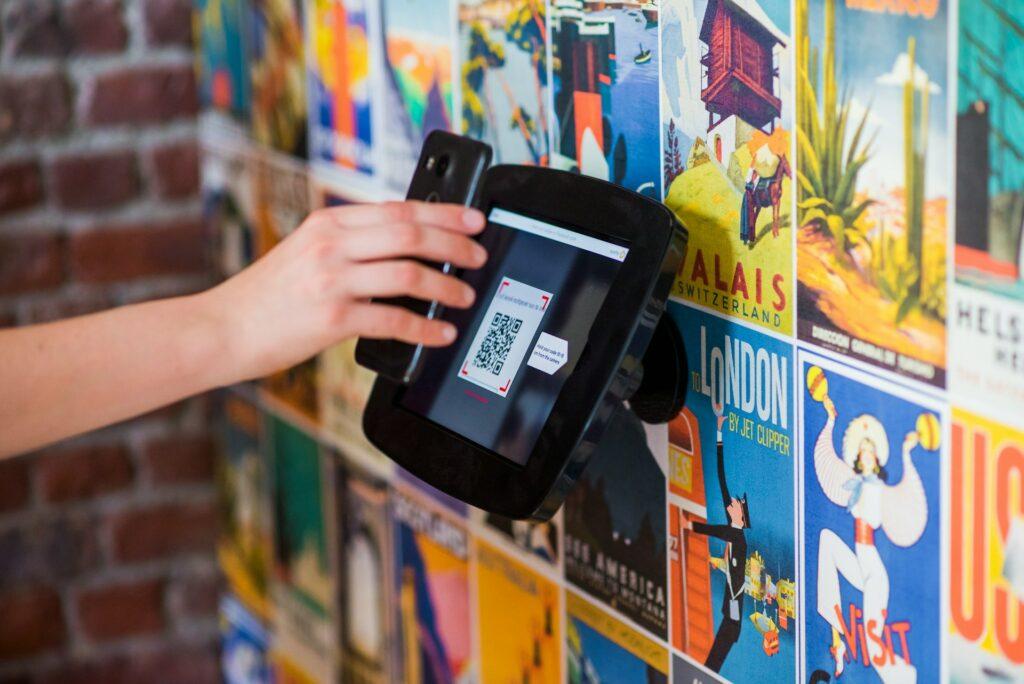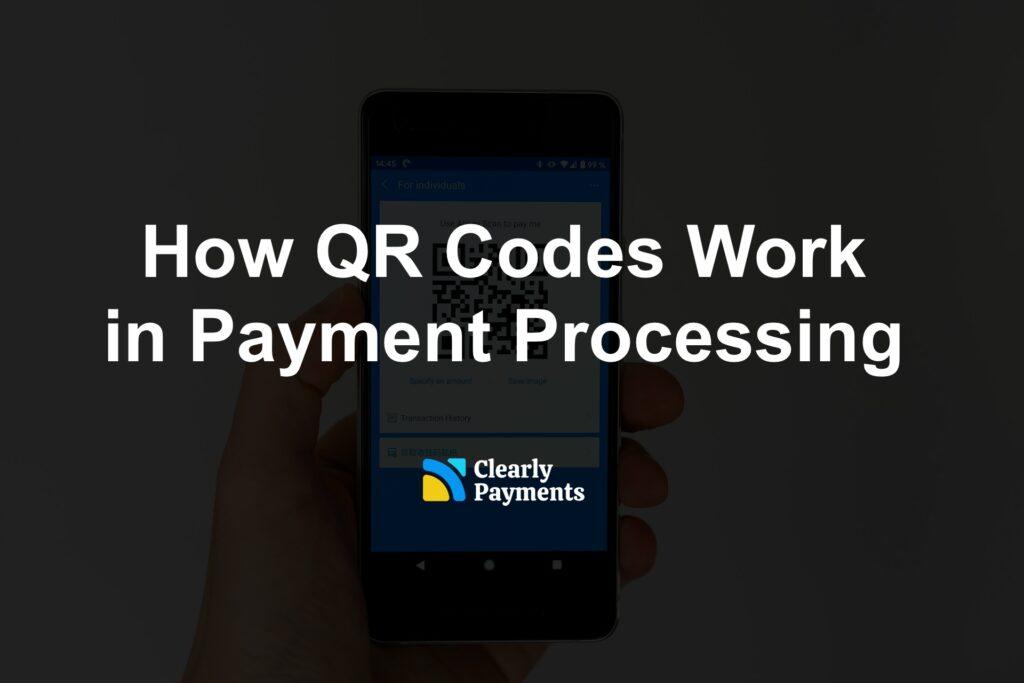In the rapidly evolving world of digital payments, QR codes have emerged as a top payment trend, revolutionizing the way transactions are conducted. This article covers QR codes for payments, exploring their mechanics, widespread adoption, and the transformative impact they have on the financial landscape.
The global QR code payment market was valued at USD $11 billion in 2023 and is anticipated to grow at a CAGR of 16.5%. It is expected to surpass USD $52 billion by 2032. In 2024, the USA, India, and France have the highest adoption of QR codes.
We will explore the various facets of QR codes for payments, including their operation, benefits, challenges, and future prospects. We will also highlight notable use cases and the impact of QR codes on different industries, providing a overview of this transformative payment technology.
What are QR Codes?
QR Codes, short for Quick Response Codes, are a type of two-dimensional barcode that can store a wide variety of information. QR codes were originally developed in 1994 by Denso Wave, a Japanese company.
Unlike traditional barcodes, which are limited to storing a small amount of data in a horizontal format, QR codes can store significantly more data both horizontally and vertically. This capability makes them ideal for a variety of applications, including payment processing, product tracking, and marketing.
A QR code consists of black squares arranged on a white square grid. The arrangement of these squares encodes the information within the code. QR codes can encode various types of data, such as text, URLs, or other data types used in automatic identification and data capture (AIDC) technologies.
To access the information stored in a QR code, a user simply needs to scan the code with a QR code reader, which is often a feature included in smartphone camera applications. Upon scanning, the reader interprets the pattern of the squares and converts it back into the encoded data, which can then be used for various purposes, such as directing the user to a website, displaying a message, or initiating a payment.
QR codes have gained widespread popularity due to their versatility, ease of use, and the ability to store a large amount of data in a compact format. They are used in various industries and applications, from advertising and marketing to supply chain management and contactless payments.
QR Codes in Payment Processing
In the context of payment processing, a QR code is a two-dimensional barcode used to facilitate quick and secure transactions between a payer (such as a customer) and a payee (such as a merchant). The QR code contains information related to the payment, such as the merchant’s identification, the amount to be paid, and a transaction reference. When a customer scans the QR code using a smartphone or a dedicated QR code scanner, the payment app interprets the information and initiates the payment process.
QR codes in payment processing can be categorized into two main types:
Static QR Codes: These QR codes contain fixed information and do not change with each transaction. They are often used by merchants for accepting payments, where the same code can be scanned by multiple customers. However, the customer usually needs to manually enter the payment amount.
Dynamic QR Codes: These QR codes are generated for each transaction and contain specific details such as the exact amount to be paid. This ensures a faster and more secure transaction, as the code is unique and can include additional security features like encryption.


QR code payments are popular because they are convenient, fast, and secure. They allow for contactless transactions, reducing the need for physical contact or handling cash. Additionally, QR codes can be easily displayed on various media, such as screens or printed materials, making them accessible for both online and offline transactions.
How QR Codes Work in Payments
QR codes have become a popular method for facilitating payments due to their simplicity and efficiency. Here’s a step-by-step explanation of how QR codes work in the context of payments:
1. Generation of QR Code
For a transaction to occur, a QR code needs to be generated. This can be done by the merchant or the payment service provider. The QR code contains encoded information such as the merchant’s account details, the transaction amount (for dynamic QR codes), and other relevant payment data.
2. Displaying the QR Code
The generated QR code is then displayed to the customer. This can be done in various ways, such as printing the QR code on a bill or displaying it on a digital screen at the checkout counter or on an online payment page.
3. Scanning the QR Code
The customer uses a smartphone or a dedicated QR code scanner to scan the QR code. This is typically done through a payment app or a mobile banking app that has QR code scanning capability.
4. Decoding the QR Code
Once the QR code is scanned, the app decodes the information embedded in the code. This information is used to initiate the payment process. For dynamic QR codes, the payment amount and other transaction details are automatically retrieved. For static QR codes, the customer may need to manually enter the payment amount.
5. Payment Authorization
The customer reviews the transaction details on their device and authorizes the payment. This could involve entering a PIN, using biometric authentication, or confirming the payment in some other way, depending on the app and the security requirements.
6. Transaction Processing
After the payment is authorized, the transaction is processed through the payment network. The funds are transferred from the customer’s account to the merchant’s account. This process involves communication between the customer’s bank, the merchant’s bank, and any intermediaries involved in the payment processing.
7. Confirmation of Payment
Once the transaction is completed, both the customer and the merchant receive confirmation. The confirmation can be in the form of a digital receipt, a notification in the app, or a message displayed on the screen.
Industries that use QR Codes for Payments
QR codes have become a widely adopted tool for payments across various sectors and regions. Their use spans from small local businesses to large multinational corporations, catering to diverse needs and scenarios. Here are some of the key users and famous use cases of QR codes for payments:
Retail Businesses
Retailers, both large and small, use QR codes to facilitate quick and contactless payments at checkout counters. Customers can simply scan the QR code displayed at the point of sale with their smartphones to complete the transaction. This method is particularly popular in stores where speed and convenience are crucial, such as grocery stores, clothing outlets, and convenience stores.
Restaurants and Cafes
Many dining establishments have adopted QR codes for a seamless payment experience. Customers can scan a QR code printed on their bill or displayed at the table to pay for their meals without waiting for a server to process the payment. This use case has gained traction during the COVID-19 pandemic, as it minimizes physical contact.
Transportation Services
Public transportation systems, ride-sharing services, and parking facilities use QR codes to streamline fare collection and payment processes. Commuters can scan a QR code at the entrance of a subway station, on a bus, or in a parking lot to pay for their ride or parking fee.
Event Ticketing and Entry
Event organizers and venues use QR codes for ticket sales and entry management. Attendees can purchase tickets online and receive a QR code as their entry pass, which can be scanned at the venue for admission. This method is commonly used for concerts, sports events, and exhibitions.
Examples of QR Codes in the Market
Several well-known retailers have embraced QR codes as part of their payment and marketing strategies. Here are some examples:
Walmart: Walmart has implemented QR codes in its Walmart Pay feature, allowing customers to pay for their purchases by scanning a QR code at the checkout with their smartphones.
Starbucks: Starbucks uses QR codes for its mobile app payments. Customers can scan a QR code displayed on their app to pay for their orders at the counter.
Target: Target offers a similar mobile payment solution through its app, where customers can scan a QR code at the checkout to pay for their items.
Amazon Go: Amazon’s cashierless stores use QR codes for entry and payment. Customers scan a QR code from the Amazon Go app to enter the store, and their purchases are automatically charged to their Amazon account when they leave.
Best Buy: Best Buy has incorporated QR codes into its mobile app, allowing customers to scan products in-store for more information and to complete purchases.
Sephora: Sephora uses QR codes for various purposes, including mobile payments, accessing product information, and linking to augmented reality experiences.
Nike: Nike has integrated QR codes into its retail stores and mobile app, enabling customers to check product availability, access exclusive content, and make purchases.
These examples illustrate the versatility and convenience of QR codes in enhancing the retail experience and streamlining the payment process for both customers and businesses.




